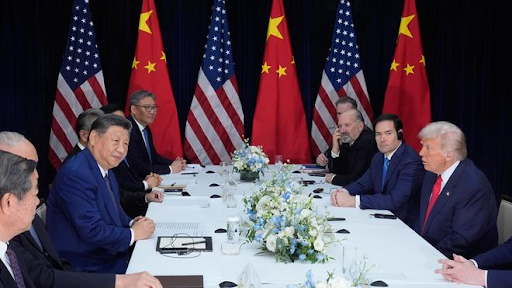




Copyright infringement not intended
Picture Courtesy: https://indianexpress.com/article/opinion/columns/jaishankar-modi-doctrine-india-foreign-relations-cold-war-9671460/
The key test for India's 'multi-alignment' strategy is whether it is using its emerging power for only self-interest, or whether it has both a moral and rational stance.
The "Jaishankar-Modi Doctrine" refers to India's shift from a traditional non-aligned foreign policy stance to a "multi-alignment" approach under Prime Minister Narendra Modi and External Affairs Minister S. Jaishankar.
This new doctrine focuses on a multi-vector strategy that aims to maintain India's interests and values across various global relationships, instead of simply avoiding conflict as in the past.
It prioritizes being a geopolitical player, actively engaging with multiple countries and parties at the same time.
Evolution of India’s Approach to Multilateralism |
|
|
Cold War Era |
|
|
Post-Cold War Era |
|
India's past non-aligned policy during the Cold War era was more focused on minimizing the impact of geopolitical events and to focus on domestic development instead of actively seeking to influence global affairs.
The new "Jaishankar-Modi Doctrine" represents a shift toward a more proactive approach in which India engages with multiple countries and groups at the same time, seeking national interest outcomes while balancing interests and values.
This shift in foreign policy highlights a more dynamic and forward-looking approach to global engagement compared to the more passive non-aligned policy.
Case StudyIndia has maintained its anti-war stand while continuing to purchase Russian crude oil at low prices and acquiring advanced US defense equipment. It has not criticized Russia or Israel while negotiating trade, energy, and defense issues with both countries. India has discussed establishing an Indian port in Iran while supporting Israel's right to respond to attacks in Gaza. |
The new Doctrine allows India to engage with different global powers and parties to balance its interests and values in such a way that maximizes opportunities and minimizes risks.
India's growing global importance has given it the space and capability to pursue such a strategy, allowing it to be stronger in achieving positive results without being limited by a rigid stance.
Many countries and parties appear to support India's pragmatic approach. As India balances competing interests and values—such as condemning war while purchasing Russian crude or supporting Israel while discussing Iranian ports—other countries accept India's multi-alignment as a natural expression of its current geopolitical situation.
The "Jaishankar-Modi Doctrine"'s flexibility and pragmatism allowed India to maintain a favorable geopolitical balance.
ConcernThe multi-alignment strategy may result in increased bureaucratic complexity and a lack of clear direction, especially for smaller businesses and non-governmental actors. Balancing interests and values across multiple countries and situations requires a complicated and adaptable foreign policy approach, and it remains to be seen whether India can maintain this level of involvement over time. |
The pandemic exposed the limitations of global institutions such as the United Nations, World Health Organization, and World Trade Organization. The crisis exposed weaknesses in global coordination, such as a lack of vaccine availability and the TRIPS waiver for vaccines, which was rejected by the US and EU.
The Failure of the United Nations to manage the Russia-Ukraine conflict and West Asia conflict indicated the limitations of the UN Security Council, and also compromised its credibility as a global peacekeeper.
India's multilateral approach is guided by a combination of pragmatic engagement and moral stances on global issues. It aims to protect its national interests while taking part in international leadership structures. India's call for reforms in multilateral institutions is part of a larger strategy to create a more equitable and rules-based global order that addresses modern-day challenges.
Must Read Articles:
FOUR PHASES OF INDIAN MULTILATERALISM
Source:
|
PRACTICE QUESTION Q.Critically analyze the evolution of India's approach to multilateralism from the Cold War era to the post-globalization period. (150 words) |




© 2026 iasgyan. All right reserved